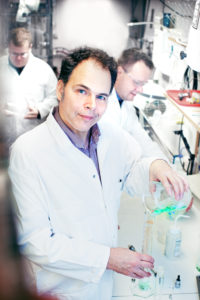Improved Predictions of Separation Procedures by Combining Chemistry with Mathematics and Computing
We apply numerical tools, based on physical chemistry, to characterize, validate and optimize analytical and preparative separation methods important for analytical chemists, biochemists and pharmaceutical chemists. We are currently working on separation systems using High Pressure Liquid Chromatography and Supercritical Fluid Chromatography.
See a FSSG slideshow here
Presentation
The Fundamental Separation Science Group (FSSG) is a new and competitive research group in the Chemistry Department at Karlstad University. It is our vision to build up a platform for fundamental theoretical separation science at Karlstad University. We have strong academically cooperation´s with the important groups in Europe and USA.
Liquid chromatography and biosensors: Fundamental studies, algorithm development and process optimization. We will continue thermodynamic characterizations to obtain a deeper and more complete understanding of analytical / preparative separation mechanisms and of data from modern biosensors. We will complete our excellent knowledge about thermodynamic characterization with kinetic methods. One very attractive approach is to use molecular dynamic theories for kinetic characterization which we will improve and develop for complementing the thermodynamic characterization of modern analytical and preparative phase systems; preliminary such complementary kinetic calculations are very promising. Mathematical modeling and validation of preparative LC systems increases our understanding, saves money and reduces waste. We will therefore focus on advanced process optimization using a holistic approach that takes all relevant parameters into account.
SFC for Greener Purification: Fundamental studies, algorithm development and process optimization. Instead of harmful solvents, environmentally friendly supercritical fluids, such as CO2, are used in SFC. But currently both reliable theory and adsorption isotherm determination methods are lacking for SFC and will be developed based on our knowledge of LC. We are currently working intensively with the transfer of technology of methods for adsorption isotherm determination from LC to SFC where there are many pitfalls on the road. Finally, we hope that this research should allow holistic computer-assisted process optimization of also SFC in the same way as soon possible for LC.

